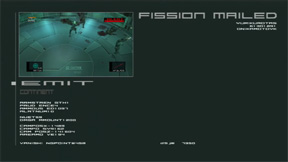This essay serves as a "sequel" to "Driving Off the Map," my essay about form and fiction in Metal Gear Solid 2. Given the relationship between the two games, the work would be incomplete without comparing the two. The Evil Within 2 takes its predecessor's artistic victories to a new height. We'll now look at why.

|
Both games prod the point of contact between player and character, connecting them through VR media — Raiden's VR training in one, STEM in the other. They break the fourth wall and provoke memories of the first games. They use the sequel as an occasion to recontextualize the player's memories.
Metal Gear Solid 2 conflated our memory of Shadow Moses with Raiden's VR training. Our real experience was recontextualized as Raiden's videogame training. The Evil Within 2 likewise recontextualizes the player's memories, depicting our old player/character bond as damaging, in contrast with the usual assumption that a character benefits through the player's alliance.

|
Metal Gear Solid 2's strident attitude ultimately compromised its artistic success. When a sequel about ending sequels gets a sequel, its message weakens. Raiden later returned to the player's control, physically dismembered and rebuilt by the very forces that connected him to the player. By trying to cut all ties with the player, Metal Gear Solid 2 took a risk that went south because the series continued.
The Evil Within 2, by contrast, dignifies our relationship to Sebastian. It is less a break-up and more marriage counseling. By developing the player/character relationship past rejection, The Evil Within 2 avoids taking a hardline stance that it can't guarantee.

|
The Evil Within 2 is just as self-involved as Metal Gear Solid 2. Metanarrative must be. However, it uses its metanarrative to focus beyond itself. Its player/character relationship is, among other things, a metaphor for post-traumatic emotional survival. Its weightier material makes it more relevant than a videogame whose metanarrative explores the nature of videogames.
The Evil Within 2 inherits Metal Gear Solid 2's artistic success and carries it further. The game is about us — who we are after the game ends — rather than its medium or protagonist. It draws its emotional vitality from its outward focus. It likes us, which makes every difference.
